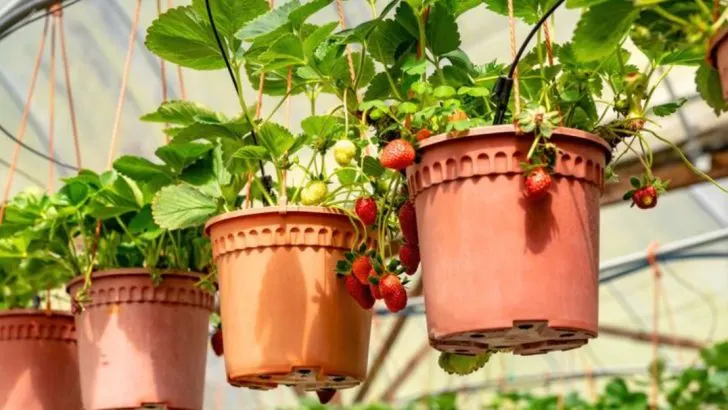Homesteading isn’t limited to vast acres of land—with a few clever strategies, you can grow an abundance of food in even the smallest spaces. Whether you have a tiny backyard or just a balcony, maximizing your space, time, and resources is key to a successful homestead.
These 21 homesteading tips will show you how to make the most of your available space and grow more food with less effort. From container gardening to companion planting, these easy-to-implement methods will help you efficiently produce a variety of foods, no matter how limited your space is.
Get ready to transform your space into a mini food haven and start producing more food at home!
Vertical Gardening
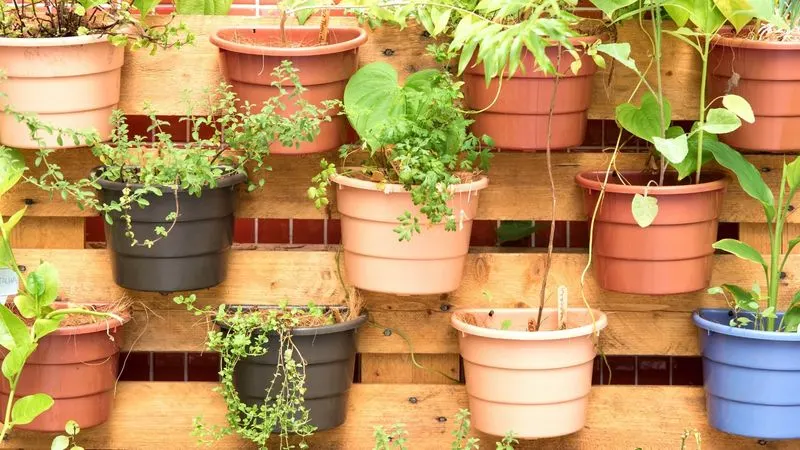
Stacking planters or using wall-mounted systems can significantly increase your planting area. This method is ideal for growing herbs and small vegetables like lettuce. Not only does it save space, but it also adds an attractive visual element to your homestead. It’s a great way to utilize walls or fences, turning them into productive growing spaces. Consider modular systems that allow easy rearrangement. This approach fosters creativity, letting you experiment with different plant combinations without needing a large plot. Plus, vertical gardens can be easier to maintain, reducing back strain.
Companion Planting
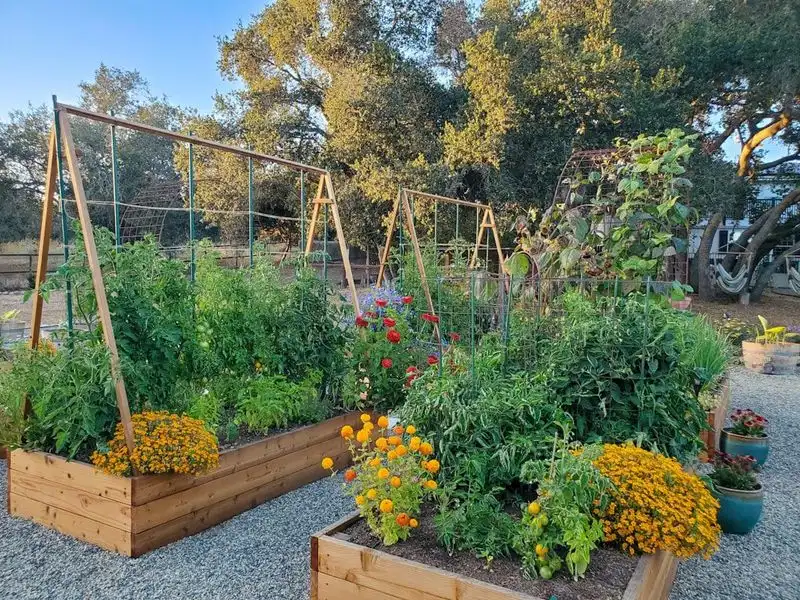
Pairing plants that benefit each other can maximize growth and reduce pests. For instance, planting basil near tomatoes can enhance flavor and deter insects. This synergy allows you to use space more efficiently, as plants support each other’s growth. Beyond pest control, companion planting can improve soil health by optimizing nutrient uptake. Consider classic pairings like carrots and onions, or experiment with your own combinations. This method encourages biodiversity, creating a balanced ecosystem that supports robust plant health. It’s about letting nature work for you.
Raised Beds
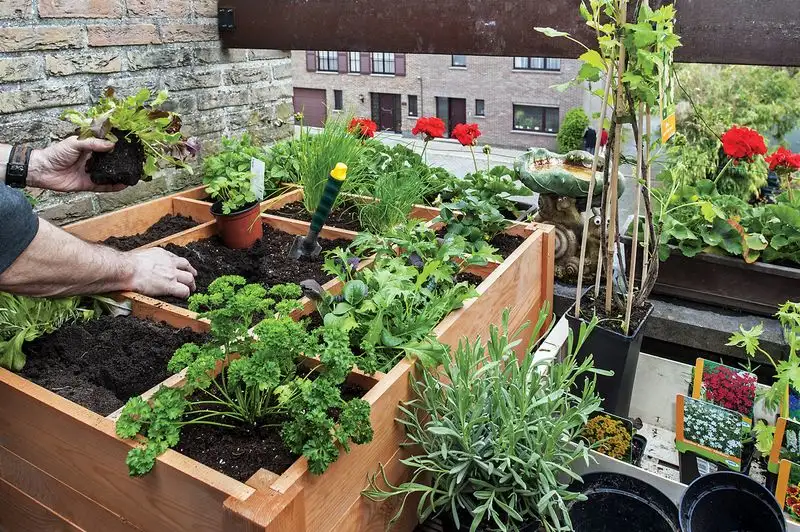
Raised beds offer improved drainage and soil quality, making them ideal for small spaces. They allow for better control over soil conditions, leading to healthier plants. By elevating your garden, you can reduce soil compaction, which benefits root growth. These beds are perfect for intensive planting, enabling closer spacing of plants. Raised beds can also extend the growing season by warming up faster in spring. Construct them from wood or recycled materials to suit your aesthetic and environmental preferences. They’re versatile and add a tidy look to your garden.
Square Foot Gardening
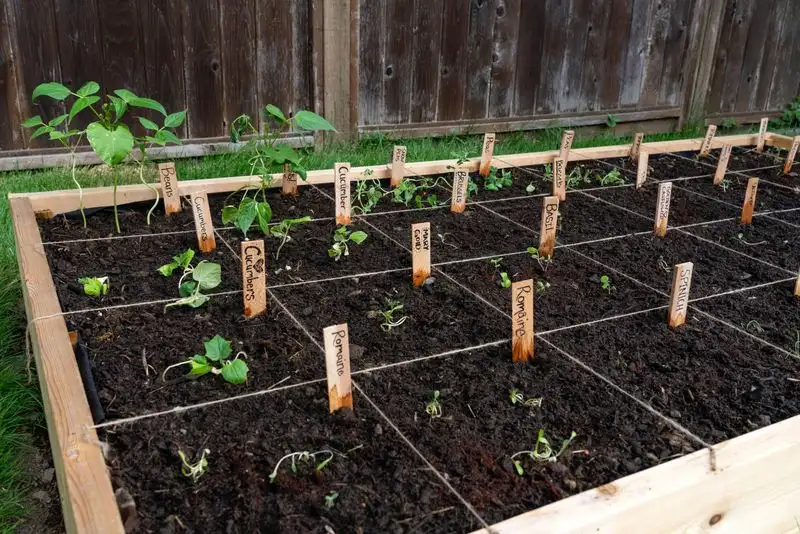
This method maximizes space by dividing the garden into square sections, each dedicated to a different plant. It encourages dense planting, reducing the need for weeding and watering. By focusing on small, manageable sections, even beginners can achieve success. This approach is ideal for those with limited space, allowing diverse crops in a compact area. It promotes efficient use of resources and simplifies garden management. Measuring and planning each square foot helps in maintaining order and achieving high productivity. It’s a strategic way to cultivate a variety of plants together.
Succession Planting
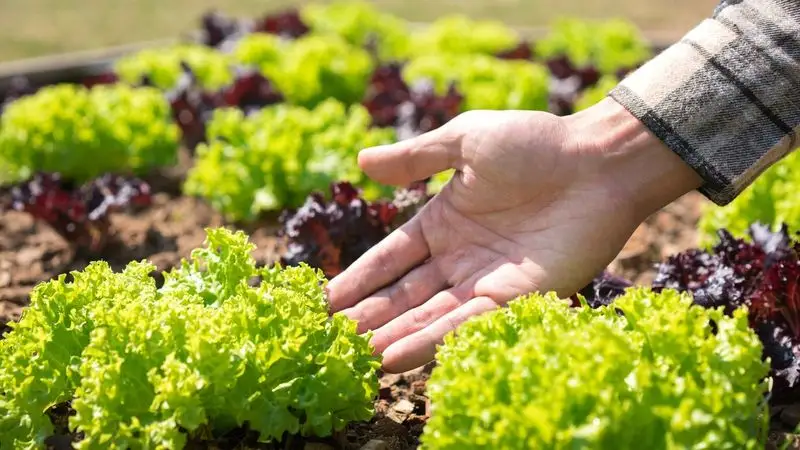
Timing is key to maximizing yield through succession planting. By staggering planting dates, you ensure a continuous harvest. This method helps in making the most of available space throughout the growing seasons. It involves planting new crops as soon as one is harvested, keeping the garden productive. Planning is crucial, so keep track of planting and harvesting dates. This technique requires understanding each plant’s growth cycle to avoid overlap. The result is a steady supply of fresh produce and efficient use of garden space, providing sustenance year-round.
Vertical Hydroponics
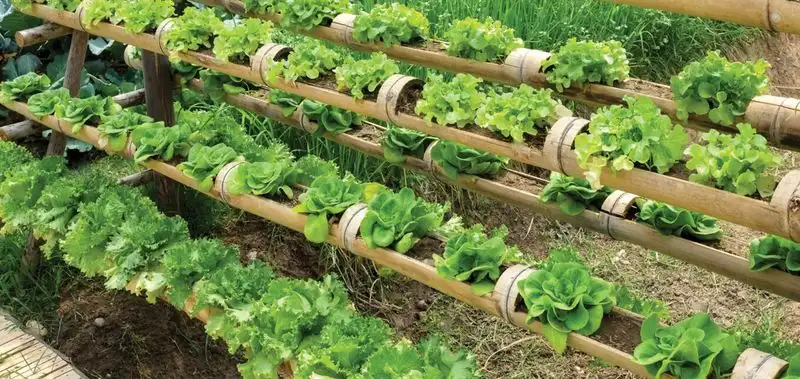
Hydroponics allows for soil-free growing using nutrient-rich water solutions. Vertical systems save space while boosting productivity. It’s perfect for urban homesteaders or those with limited outdoor space. This method supports faster plant growth due to optimized nutrient delivery. With controlled environments, pests and diseases are less of a concern. Setup can be more technical, requiring some initial investment and learning. However, the rewards include lush growth in compact spaces and reduced water usage. It’s a modern twist on traditional gardening, combining technology with sustainability.
Pallet Gardening
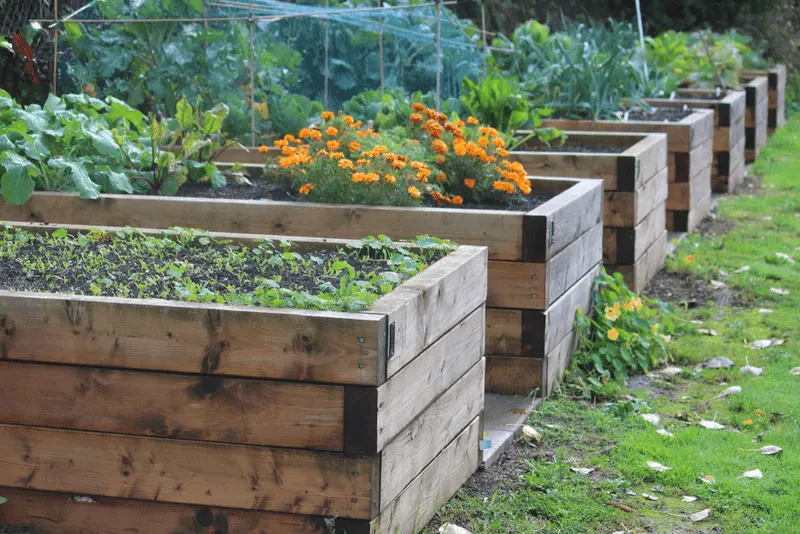
Repurposing old pallets can create efficient and attractive garden structures. These vertical planters make excellent use of small spaces. They are perfect for herbs, strawberries, or small vegetables. Pallets can be painted to add a decorative touch to your garden area. This method is budget-friendly and environmentally conscious, as it involves recycling materials. Pallet gardens are easy to move and rearrange, offering flexibility. Ensure they have proper lining to hold soil without leakage. It’s a simple yet effective way to expand your garden upward.
Intercropping

Combining different crops in the same area can enhance plant growth and yield. Corn and beans are a classic example, where beans fix nitrogen, benefiting corn. This strategy maximizes space and boosts productivity by optimizing the growing environment. Intercropping can also provide pest control benefits, as diverse plantings confuse and deter insects. Select crops that complement each other in growth habits and nutrient requirements. This method encourages a harmonious garden ecosystem, allowing plants to thrive together. It’s an excellent way to increase biodiversity and enhance soil fertility.
Fruit Trees in Pots
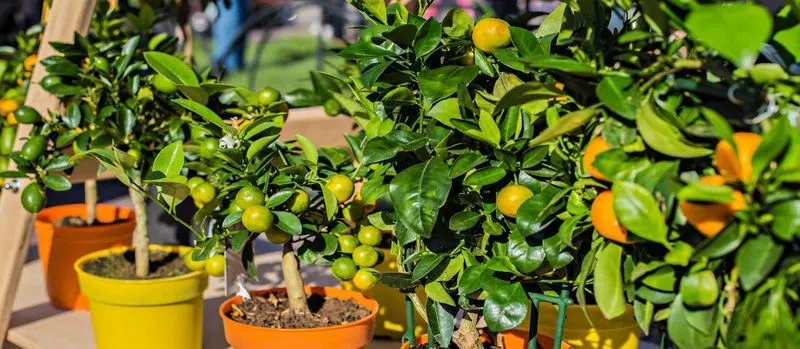
Dwarf fruit trees are perfect for container gardening, bringing the orchard experience to patios and balconies. They require less space and can be easily moved to catch the best sunlight. Pots allow control over soil conditions and watering, promoting healthy growth. These trees can produce full-sized fruit, offering a rewarding harvest. Choose varieties suited to your climate and space, and ensure pots have good drainage. Regular pruning helps maintain size and shape, encouraging more fruit. It’s a delightful way to enjoy fresh fruit from compact spaces.
Espaliering
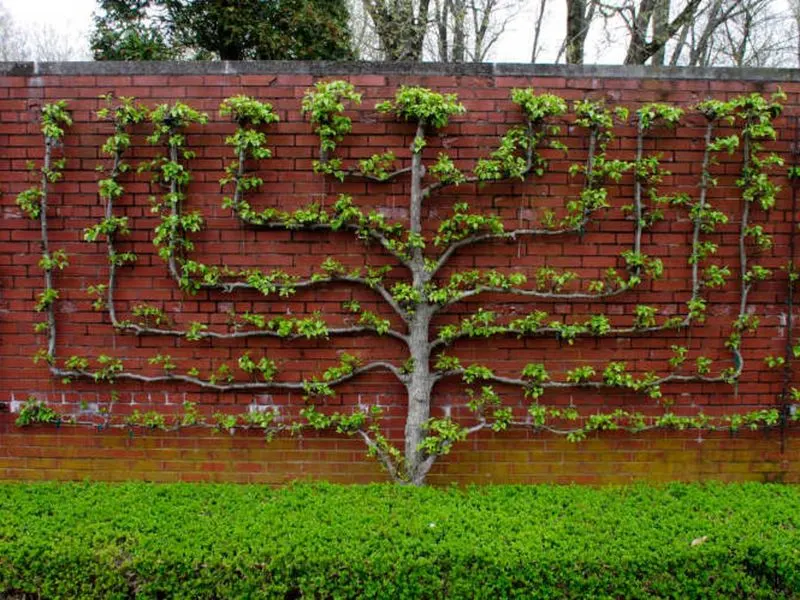
This ancient technique involves training trees to grow flat against a structure, such as a wall or fence. It’s an efficient use of space, ideal for small gardens. Espaliering not only saves space but also makes harvesting easier. The method involves careful pruning and training of branches to create a two-dimensional growth pattern. It can be used with various fruit trees, enhancing both productivity and aesthetics. This technique allows for better sunlight exposure and air circulation, promoting healthy growth. Patience and dedication are required, but the results are artistic and bountiful.
Self-Watering Containers

These containers reduce the need for constant watering, ideal for busy gardeners. They offer convenience and efficiency, ensuring plants receive consistent moisture. The design includes a water reservoir at the bottom, which supplies water through capillary action. This setup prevents overwatering and encourages deep root growth. Self-watering containers are perfect for vegetables, herbs, and small fruit plants. They’re especially useful in hot climates where soil dries out quickly. By maintaining optimal hydration, they enhance plant health and yield. This innovative solution simplifies gardening and supports thriving plants even in challenging conditions.
Compacting Perennials
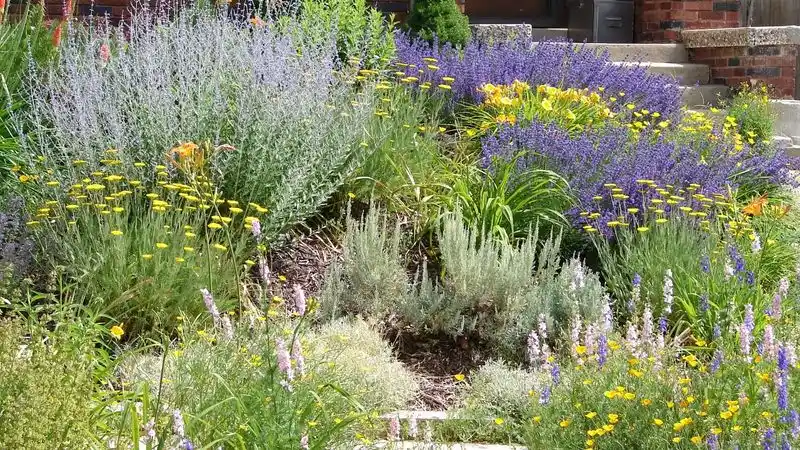
Perennials return each year, offering a reliable food source without replanting. Compact varieties are perfect for tight spaces and require less maintenance. They fill garden beds with lush foliage and can produce significant yields. Choose plants that offer multiple harvests, like certain herbs or leafy greens. These plants often develop extensive root systems, improving soil structure over time. By investing in perennials, you ensure a sustainable, low-maintenance garden. They seamlessly integrate into existing spaces, providing continuity in your garden. This approach celebrates persistence and resilience in gardening.
Layered Planting
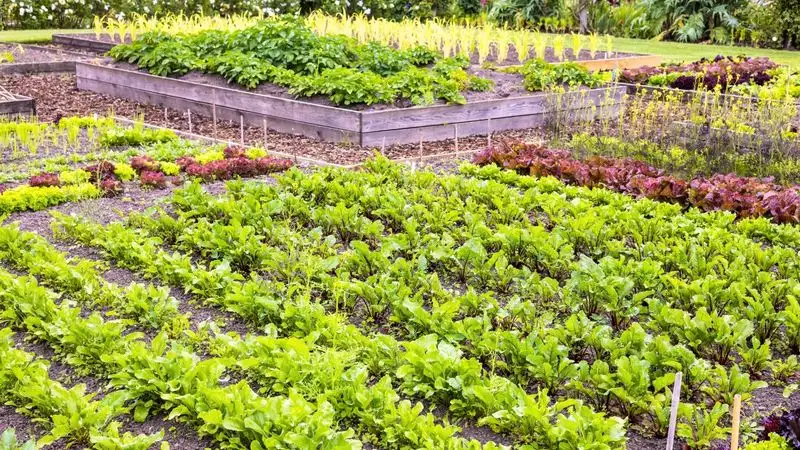
Growing plants in layers maximizes sunlight usage and space. Tall plants like sunflowers provide shade for more delicate, sun-sensitive plants below. This method mimics natural ecosystems, where every layer of growth contributes to the whole. It’s effective in small gardens, allowing multiple crops to coexist harmoniously. Layered planting also fosters biodiversity, promoting a healthy garden environment. Plan carefully to ensure each layer receives adequate light and nutrients. This strategy enhances visual appeal and productivity, transforming limited areas into vibrant, flourishing gardens. It’s a testament to the power of thoughtful planning.
Aquaponics
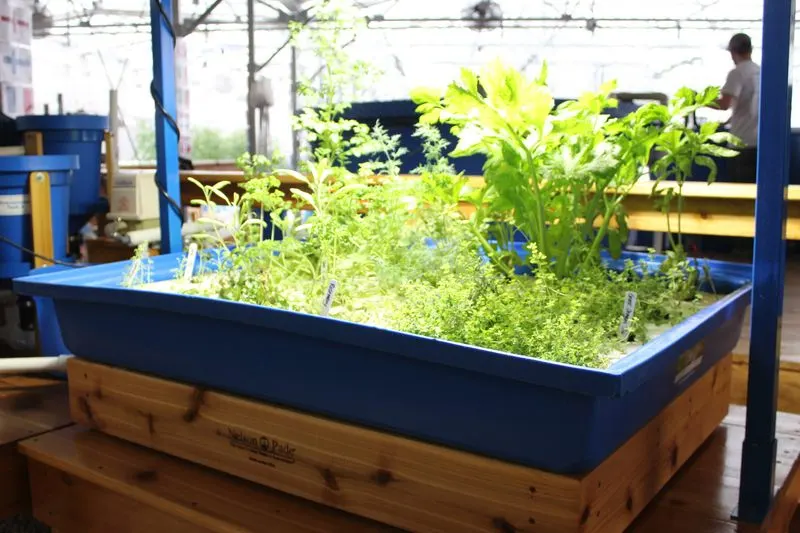
Combining aquaculture with hydroponics, aquaponics creates a self-sustaining ecosystem. Fish waste provides nutrients for plants, while plants help clean the water. This symbiotic relationship maximizes space efficiency, especially indoors or in urban settings. Aquaponics systems can be customized to fit various sizes, from small indoor setups to larger outdoor installations. The method requires initial setup and monitoring, but it reduces the need for fertilizers and pesticides. By integrating fish and plant production, you create a balanced system that supports high yields. It’s a futuristic, eco-friendly approach to homesteading.
Cold Frames
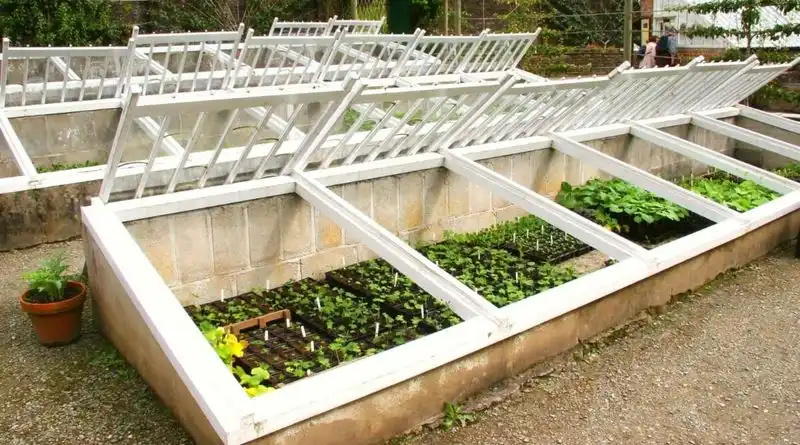
Cold frames extend the growing season by protecting plants from cold weather. They’re simple structures, often made of wood and glass, that trap heat. By starting seeds earlier or extending the harvest into fall, you maximize production. These frames are perfect for hardening off seedlings or growing cold-tolerant crops. Placement is critical; ensure they receive ample sunlight while shielding from harsh winds. Cold frames offer a cost-effective way to boost yields in cooler climates. They’re a valuable tool for any gardener looking to stretch seasonal boundaries and enhance food production.
Urban Beekeeping

Bees are crucial for pollination, and keeping them can significantly increase garden productivity. Urban beekeeping is gaining popularity, allowing city dwellers to support biodiversity. A small hive can boost yields by enhancing pollination efficiency. Bees thrive in environments with diverse flowering plants, so create a bee-friendly space. While beekeeping requires learning and commitment, the payoff includes honey and improved garden health. It’s a rewarding venture that complements homesteading efforts. By fostering bee populations, you contribute to ecological balance and enjoy the fruits of your labor—quite literally.
Container Stacking
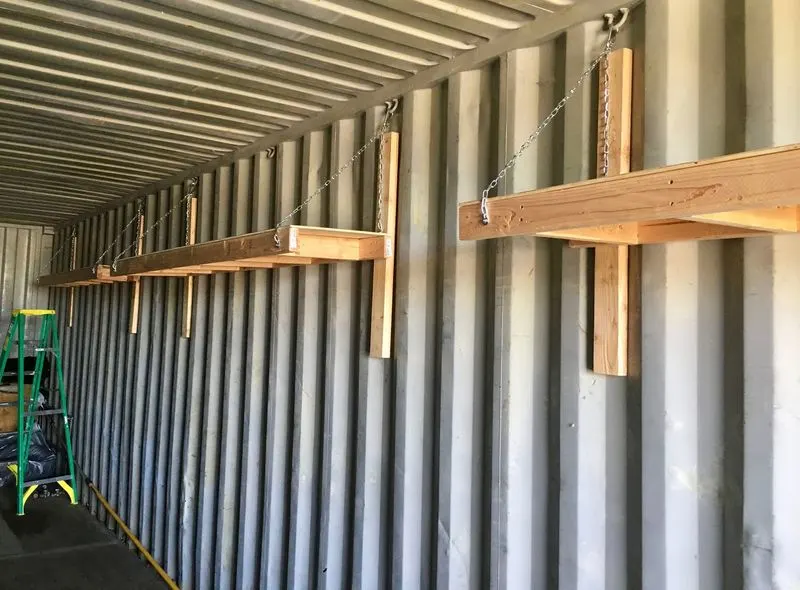
Stacking containers in tiers makes excellent use of vertical space, essential for small areas. This method is perfect for balconies or patios, offering flexibility and mobility. You can grow a diverse range of plants, from herbs to vegetables, in these compact setups. Ensure containers have proper drainage and are stable when stacked. This approach allows for easy reconfiguration as your gardening needs change. It’s particularly useful for renters or those with limited outdoor space, making gardening accessible and enjoyable. Container stacking is a creative way to build a productive garden where space is limited.
Gutter Gardens
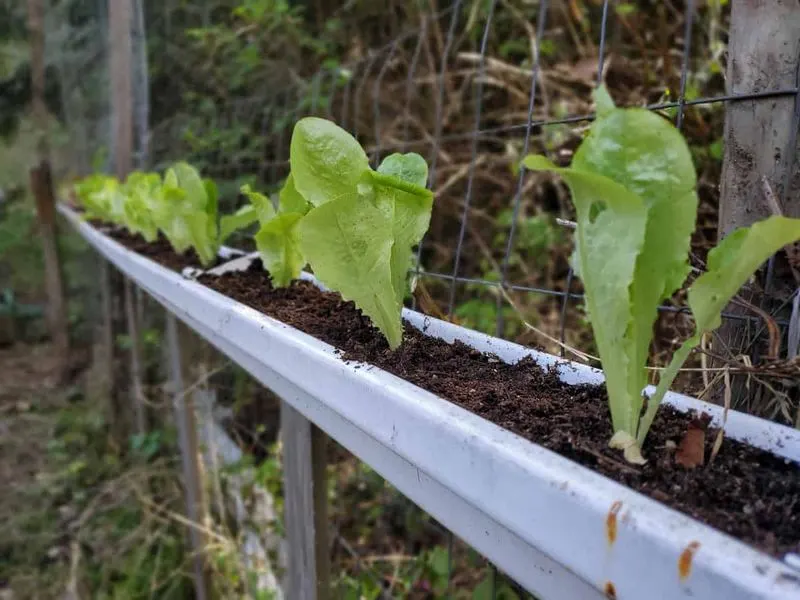
Mounting old gutters on walls can create slim, efficient planting spaces. They’re ideal for shallow-rooted plants like lettuce or strawberries. This vertical gardening technique maximizes small areas, perfect for urban homesteaders. Ensure gutters have proper drainage and are securely fastened. Gutter gardens can be placed at different heights, allowing for creative, layered designs. They’re a cost-effective way to expand your planting area without a large footprint. This solution combines recycling with innovation, allowing you to cultivate a surprising amount of produce in a narrow space.
Mulching
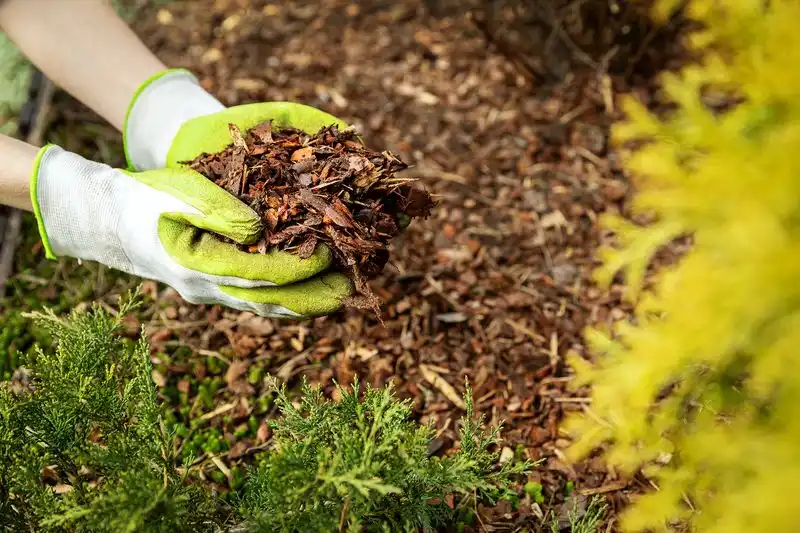
Mulching conserves soil moisture, suppresses weeds, and adds organic matter. It’s a simple technique with profound effects on garden health and productivity. Mulch can be made from various materials, including straw, wood chips, or leaves. By covering the soil, mulch stabilizes temperature and encourages beneficial organisms. It’s particularly valuable in hot, dry climates where moisture retention is critical. Mulching reduces the need for frequent watering, saving time and resources. This practice enhances soil fertility over time, supporting robust plant growth. It’s a foundational technique in sustainable gardening.
Keyhole Gardens
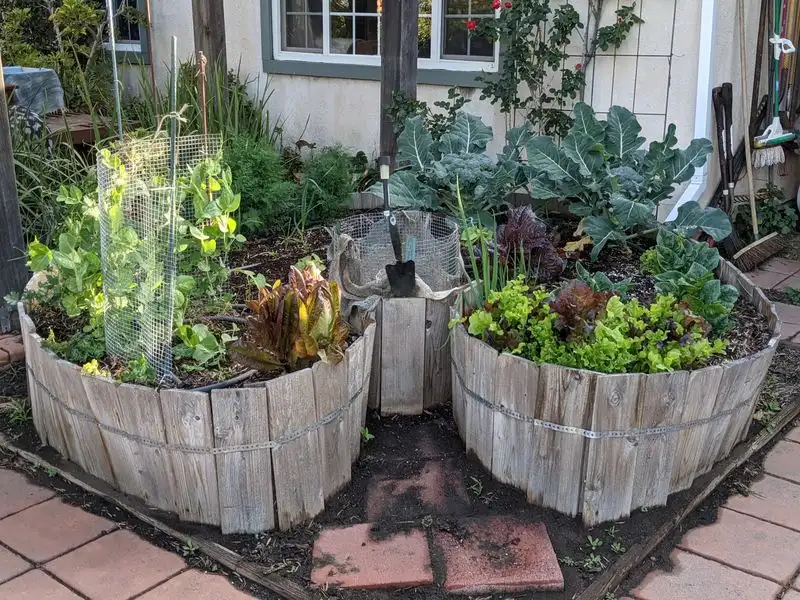
Keyhole gardens are circular beds with a central composting basket, combining gardening with waste recycling. They’re efficient in water usage and nutrient distribution. This design maximizes planting space and enhances soil fertility. The central basket allows for easy compost addition, feeding plants naturally. Keyhole gardens are particularly effective in arid regions, retaining moisture and reducing watering needs. Their raised design makes them accessible and easy to maintain. By integrating composting into the garden structure, you create a self-sustaining system that supports abundant growth. It’s an innovative approach to compact gardening.
Hanging Baskets
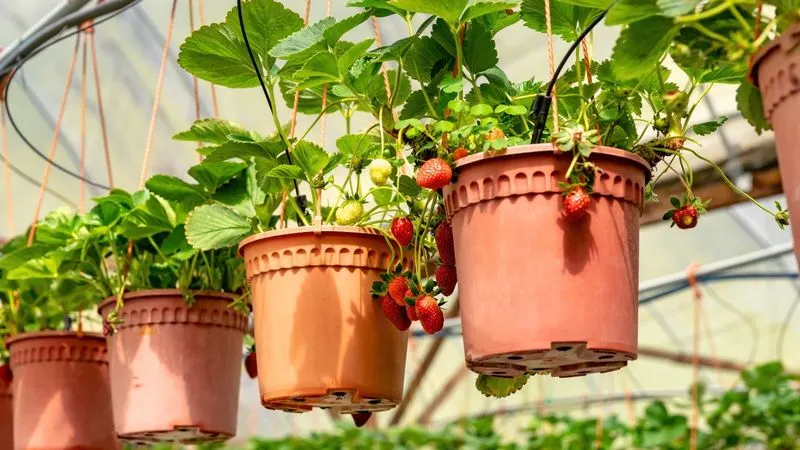
Hanging baskets transform overhead spaces into productive growing areas. They’re perfect for ornamentals or trailing vegetables like tomatoes. These baskets make great use of vertical space, adding beauty and function to porches or balconies. Ensure they’re well-secured and have adequate drainage. Hanging baskets allow you to move plants easily to catch optimal sunlight. They’re a versatile addition to any small space, offering endless design possibilities. This method brings greenery to eye level, creating an immersive garden experience in compact environments. It’s a delightful way to expand your gardening horizons.

